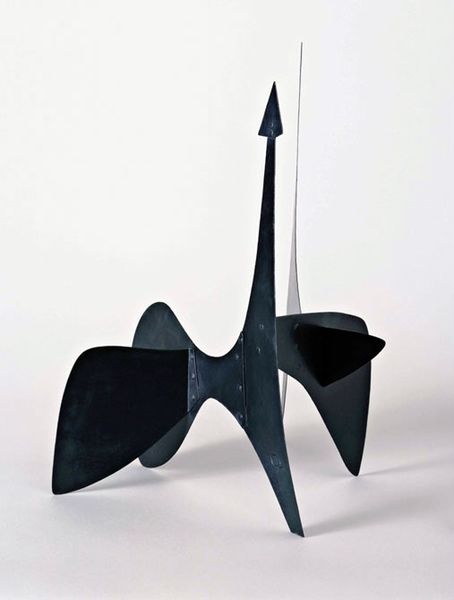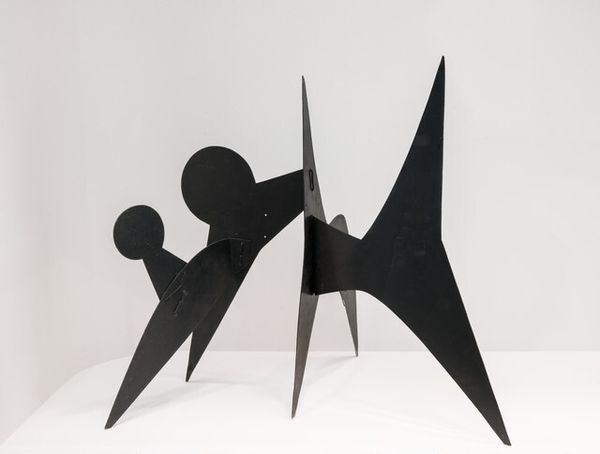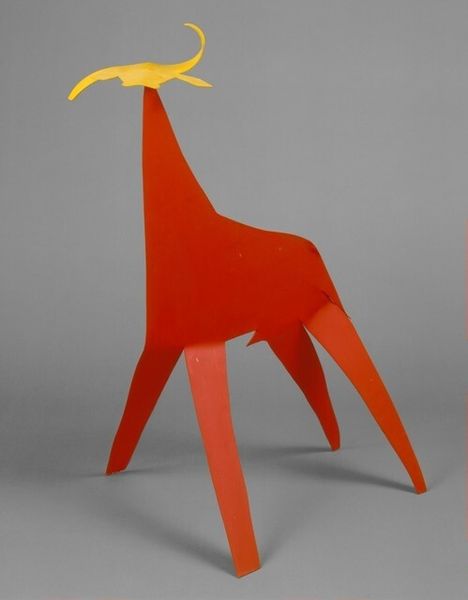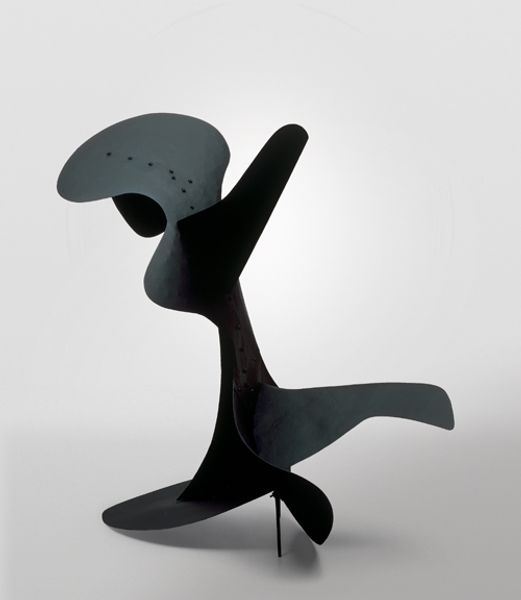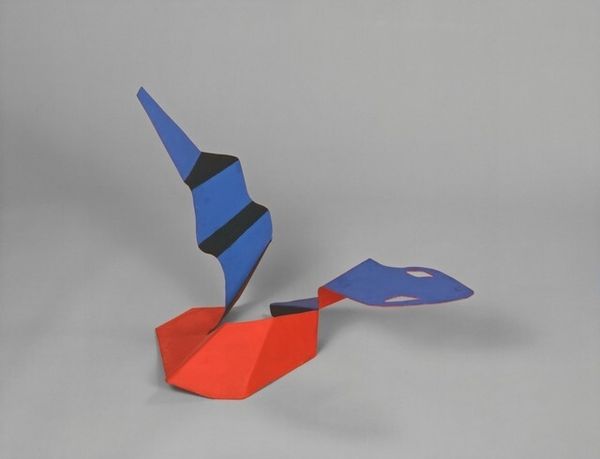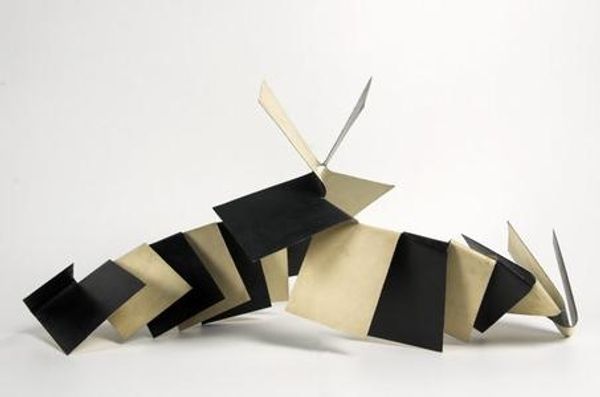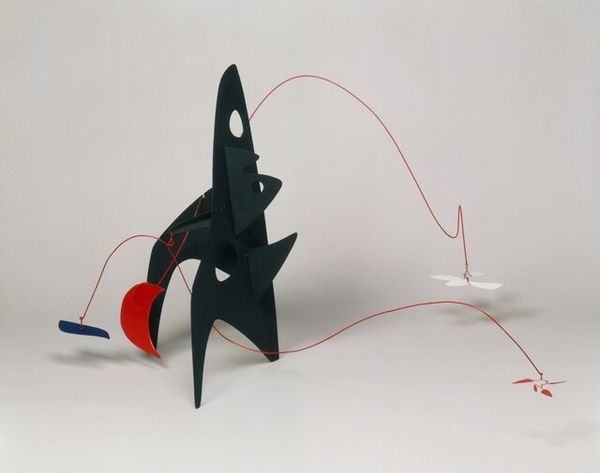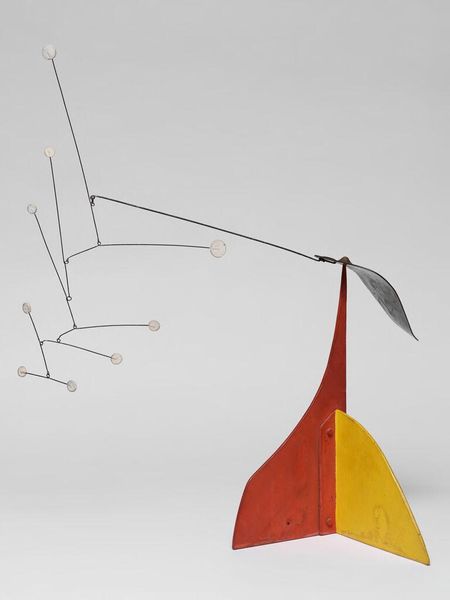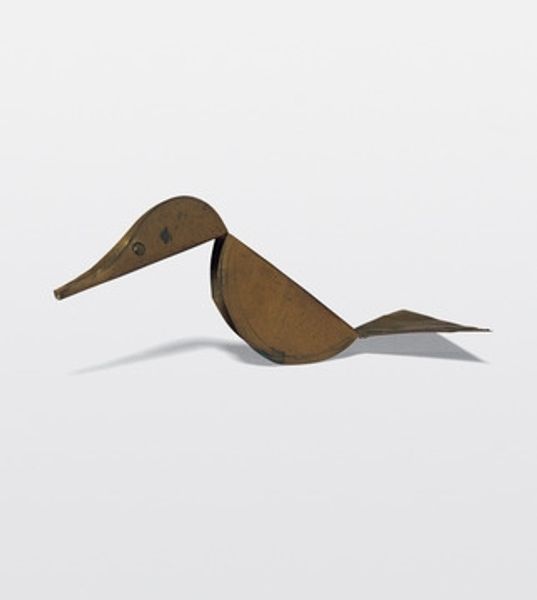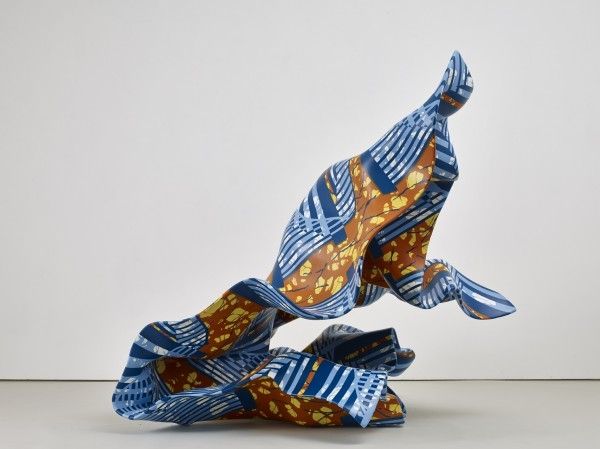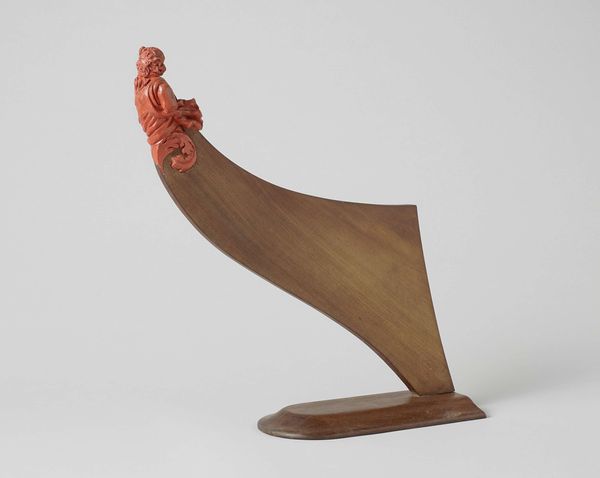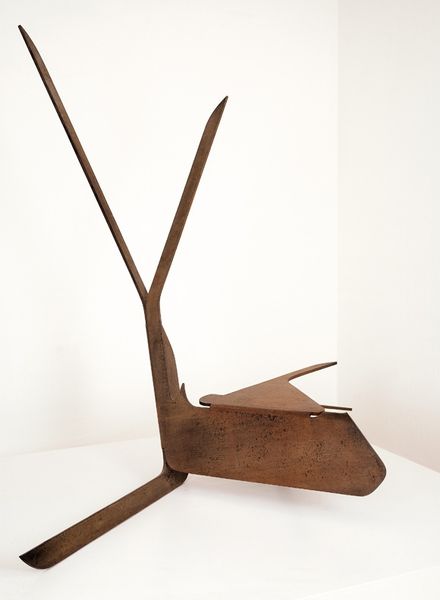
metal, sculpture, mobile
#
metal
#
constructivism
#
form
#
geometric
#
sculpture
#
mobile
#
abstraction
#
line
#
modernism
Dimensions: overall: 38.1 x 15.9 x 33 cm (15 x 6 1/4 x 13 in.)
Copyright: National Gallery of Art: CC0 1.0
Editor: Here we have Alexander Calder’s "Ruby-Eyed," created in 1936. It’s a painted metal mobile, although it’s standing still here. There’s something quite playful and unsettling about it simultaneously. What are your initial thoughts on its presentation and the social context surrounding its creation? Curator: The arresting thing to consider about a piece like this is how revolutionary it was in its time. Before Calder, sculpture was largely static, monumental. The political and social environment of the 1930s, with its increasing mechanization and social upheaval, also informs how we view a piece such as this now, doesn’t it? How would this moving abstraction break down older expectations around representation, monumentality, and artistic authority? Editor: I see what you mean. It's quite different from traditional bronze statues. Its lightness challenges that solid, powerful image we associate with monuments. I wonder how people first reacted to its unconventional nature. Curator: Well, think about the institutions exhibiting it, like the MoMA. Were they platforms supporting or resisting this kind of democratization of art? Calder’s use of industrial materials moves away from the traditional, valued materials and fine art. It asks interesting questions, what is sculpture for? How do we decide value? Is art shifting to represent motion and change over stability? Editor: Those are great points. It is interesting to think about what it means to have abstract metal moving forms celebrated in museums. Almost as if to signify this dynamism and mechanical aesthetic gaining some social and institutional validity as high art? Curator: Exactly! By observing such innovative, non-conformist expressions of social trends from a historical perspective, and their role within contemporary art establishments, we begin to understand their function beyond aesthetic novelties, and see how a simple mobile becomes a potent indicator of significant social transformations. Editor: It really puts it in a new light for me. Seeing its reception helps understand its true meaning. Thanks!
Comments
No comments
Be the first to comment and join the conversation on the ultimate creative platform.
